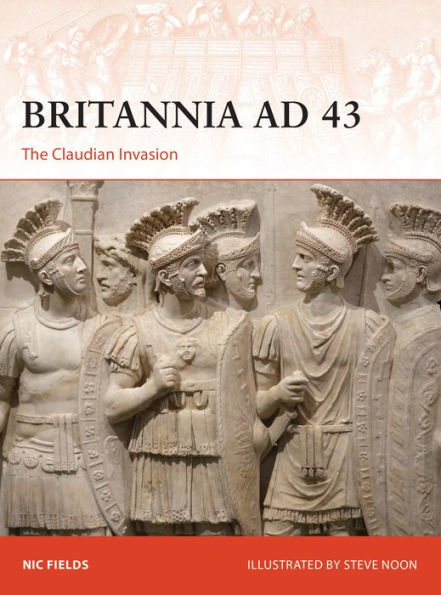For the Romans, Britannia lay beyond the comfortable confines of the Mediterranean world around which classical civilization had flourished. Britannia was felt to be at the outermost edge of the world itself, lending the island an air of dangerous mystique.
To the soldiers crossing the Oceanus Britannicus in the late summer of AD 43, the prospect of invading an island believed to be on its periphery must have meant a mixture of panic and promise. These men were part of a formidable army of four veteran legions (II Augusta, VIIII Hispana, XIIII Gemina, XX Valeria), which had been assembled under the overall command of Aulus Plautius Silvanus. Under him were, significantly, first-rate legionary commanders, including the future emperor Titus Flavius Vespasianus. With the auxiliary units, the total invasion force probably amounted to around 40,000 men, but having assembled at Gessoriacum (Boulogne) they refused to embark. Eventually, the mutinous atmosphere was dispelled, and the invasion fleet sailed in three contingents.
So, ninety-seven years after Caius Iulius Caesar, the Roman army landed in south-eastern Britannia. After a brisk summer campaign, a province was established behind a frontier zone running from what is now Lyme Bay on the Dorset coast to the Humber estuary. Though the territory overrun during the first campaign season was undoubtedly small, it laid the foundations for the Roman conquest which would soon begin to sweep across Britannia.
In this highly illustrated and detailed title, Nic Fields tells the full story of the invasion which established the Romans in Britain, explaining how and why the initial Claudian invasion succeeded and what this meant for the future of Britain.
For the Romans, Britannia lay beyond the comfortable confines of the Mediterranean world around which classical civilization had flourished. Britannia was felt to be at the outermost edge of the world itself, lending the island an air of dangerous mystique.
To the soldiers crossing the Oceanus Britannicus in the late summer of AD 43, the prospect of invading an island believed to be on its periphery must have meant a mixture of panic and promise. These men were part of a formidable army of four veteran legions (II Augusta, VIIII Hispana, XIIII Gemina, XX Valeria), which had been assembled under the overall command of Aulus Plautius Silvanus. Under him were, significantly, first-rate legionary commanders, including the future emperor Titus Flavius Vespasianus. With the auxiliary units, the total invasion force probably amounted to around 40,000 men, but having assembled at Gessoriacum (Boulogne) they refused to embark. Eventually, the mutinous atmosphere was dispelled, and the invasion fleet sailed in three contingents.
So, ninety-seven years after Caius Iulius Caesar, the Roman army landed in south-eastern Britannia. After a brisk summer campaign, a province was established behind a frontier zone running from what is now Lyme Bay on the Dorset coast to the Humber estuary. Though the territory overrun during the first campaign season was undoubtedly small, it laid the foundations for the Roman conquest which would soon begin to sweep across Britannia.
In this highly illustrated and detailed title, Nic Fields tells the full story of the invasion which established the Romans in Britain, explaining how and why the initial Claudian invasion succeeded and what this meant for the future of Britain.

Britannia AD 43: The Claudian invasion
96
Britannia AD 43: The Claudian invasion
96
Product Details
| ISBN-13: | 9781472842077 |
|---|---|
| Publisher: | Bloomsbury USA |
| Publication date: | 09/22/2020 |
| Series: | Campaign , #353 |
| Pages: | 96 |
| Sales rank: | 1,122,898 |
| Product dimensions: | 7.30(w) x 9.70(h) x 0.40(d) |
